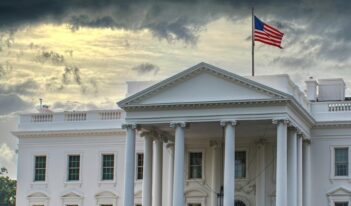
Distinguished public servants and scholars examine critical issues concerning regulatory capture—and offer solutions on its eradication.
When a regulatory agency becomes “captured” by the organizations it regulates, the public loses.
Capture arises when private interests exert an outsized influence over the very agencies that are supposed to keep them in check. A regulatory body that is overly reliant on industry representatives for information and policy direction might craft rules that prioritize private profits over public goals, such as protection of health and safety or the prevention of fraud. Similarly, a captured agency might fail to enforce rules fully against those they are charged to oversee, such as banks and other financial institutions. As a result, consumers might lose money or find their savings put at risk.
Through decisions like these, regulatory capture can work quietly, with little public scrutiny, but it can lead to devastating consequences. Of course, regulatory capture is not a new phenomenon, but in the wake of the 2008 financial crisis and the ensuing public outrage over perceived coziness between financial institutions and regulators, concerns about capture have increased and taken on a new urgency.
Today, the key questions about capture focus on how to identify it and what should be done to prevent it. Do we have too much private influence–or “rent-seeking” behavior–in the regulatory system? What consequences might rent-seeking hold for the economy? How can legislators ensure that regulators enforce rules faithfully? How do elected officials and the public even know when an agency has been captured by the organizations it regulates? How can government ensure that sophisticated private actors do not effectively craft their own rules or enjoy a free pass in following them?
In this series, The Regulatory Review presents essays focused on these and other critical questions about whether some aspects of the U.S. regulatory system, at the state or federal level, are rigged in favor of the very private interests that regulators are supposed to monitor and oversee. The contributors include some of the nation’s foremost public servants and political leaders, as well as leading scholars from law and the social sciences.
Some of the contributors’ essays in this series are similar to remarks that these contributors presented at a regulatory capture forum organized by the Administrative Conference of the United States (ACUS), held earlier this spring. ACUS is a distinctive federal agency that produces research and expert-based recommendations aimed at making improvements to the governmental procedures and processes followed by other federal agencies. We are exceedingly grateful to the staff at ACUS—especially attorney Alissa Ardito—for her vision in organizing the forum and her gracious efforts in helping us see this Series become a reality.
Productivity, Inequality, and Economic Rents
June 13, 2016 | Jason Furman, Chairman of the Council of Economic Advisers
Productivity growth has slowed in the United States. Inequality is also higher and, in recent decades, has risen faster than in other major advanced economies. Insofar as these dual trends have some common causes, there is potential to address these causes in ways that improve efficiency and equity. To this end, the evidence that a rise in rents is contributing to both phenomena is important.
Corporate Capture of the Rulemaking Process
June 14, 2016 | Elizabeth Warren, U.S. Senator (D-Mass.)
Regulatory capture is a big deal. It is one way in which powerful corporations rig the system to work for themselves—and the rest of America pays the price. Corporate influence works its magic even better in the shadows, and that is where rulemaking occurs. This essay focuses on one aspect of this pervasive phenomenon: the capture of agencies as they write the rules.
How Government Can Root Out Regulatory Capture
June 15, 2016 | Sheldon Whitehouse, U.S. Senator (D-R.I.)
Critics of regulation often argue that rules can be unduly burdensome. But on the other side of the coin, there is a threat at least as great as burdensome regulation: the threat of regulatory capture. Those of us in Congress must meet our constitutional obligation to stamp out agency capture whenever and wherever we find it, and we must do this through the executive branch.
Fighting Regulatory Capture in the 21st Century
June 16, 2016 | Mike Lee, U.S. Senator (R-Utah)
Members of both parties are guilty of railing against regulatory capture when it is politically convenient and looking the other way when it is not. The only way to reduce regulatory capture is to end the acquiescence that has allowed it to flourish under Senates, Houses, and presidencies of every partisan combination. Efforts must include an agenda to rein in agencies and regulate the regulators.
Combatting External and Internal Regulatory Capture
June 20, 2016 | Reeve Bull, Administrative Conference of the United States
Any conceivable system of government must tolerate a certain level of internal or external regulatory capture, or both. Can government be designed to limit the more pernicious effects of both? I would submit that the answer is “yes,” and that both species of capture might be reduced—though by no means eradicated—by promoting a more logical division of labor between Congress and administrative agencies.
(Not) Prosecuting Financial Crimes
June 21, 2016 | Brandon Garrett, University of Virginia School of Law
It is sobering that discussions about regulatory capture now include criminal prosecutions. One of the most remarkable stories in American criminal law is the recent rise of corporate prosecutions. In 2015, corporations paid record sums exceeding $9 billion in penalties to federal prosecutors. Companies cannot literally be put in jail, of course. And that is why adequately holding them accountable for crimes is so important.
Challenges in Measuring Regulatory Capture
June 22, 2016 | Dan Carpenter, Harvard University
There are limitations when it comes to preventing regulatory capture. Perhaps the most important is that regulatory capture is difficult to measure. We as a society have failed to settle upon measurements needed to identify regulatory capture. An executive order setting out clear criteria by which to measure regulatory capture would help provide much needed guidance for agencies and those tasked with assessing their behavior.
Preventing Regulatory Capture
June 23, 2016 | Mark Calabria, Cato Institute
Ultimately, two ideas are fundamental to combatting regulatory capture. The first is that the likelihood of regulatory capture needs to be taken into account when conducting cost-benefit analyses of regulation. The second idea is that when the public benefits do justify a regulation, increasing checks and balances, diversity of thought, diffusion of decision making power, and public transparency will decrease the chance of regulatory capture.
Prosecuting Corporate Criminals
June 27, 2016 | Jed S. Rakoff, U.S. District Court Judge for the Southern District of New York
Not a single high-level executive has been prosecuted over the 2008 financial crisis, nor have any parallel regulatory proceedings been instituted against these executives—even though, in some cases, they may have been the individuals who actually committed crimes. This stands in sharp contrast to the government’s response to the savings-and-loan crisis of the 1980s, in the wake of which hundreds of executives were prosecuted.
Old and New Capture
June 28, 2016 | Sidney Shapiro, Wake Forest University School of Law
There are two forms of regulatory capture that can affect the performance of regulatory agencies. The “old capture” occurs when regulators become co-opted by the entities they are supposed to regulate. In the “new capture,” regulators attempt to serve the public interest, but are stymied by procedural requirements and budget cuts. It is important to distinguish between these forms for purposes of fashioning appropriate remedies.
Regulatory Capture in Enforcement
June 29, 2016 | Ronald Cass, Cass & Associates
Enforcement is a major component of administrative action: it takes place in the context of formal prosecution, licensing, and agencies’ regulating, adjudicating, and enforcing rules that are designed to make businesses more fair, effective, or protective of consumer interests. Enforcement decisions that appear questionable might reflect regulatory capture, but that is not easily encapsulated in a simple story line of who is doing the capturing.
Regulatory Capture, Ancient and Modern
June 30, 2016 | Alissa Ardito, Administrative Conference of the United States
Until recently, the term regulatory capture seemed stale, a mid-20th century academic construct incapable of describing the latest manifestations of special interest influence. But it is possible to find the provenance of regulatory capture throughout history, from ancient Greece to the early United States. This essay’s brief history of the concept of capture, in particular its antecedents in political thought, may inform, if not entertain.
Exploring Regulatory Capture’s Unanswered Questions
July 4, 2016 | Susan Dudley, George Washington University Regulatory Studies Center
Although there is bipartisan agreement that regulatory capture is a problem, several critical questions remain, including, what can be done to eliminate regulatory capture? Put simply, without regulation, regulatory capture would not exist. Yet some regulation is necessary—making the form that a regulation will take, in such cases, an especially important consideration.
The Elusiveness of Regulatory Capture
July 5, 2016 | Cary Coglianese, University of Pennsylvania Law School
For a phenomenon so universally decried, regulatory capture remains elusive. Those on the left see signs of capture in lax laws, while those on the right see capture in strict laws imposing burdens on smaller businesses. It is easy for people to talk past each other when talking about capture. It is hard to pin the phenomenon down. Capture’s elusiveness stems from four principal factors.
When the Rule-Makers Are Captured
July 6, 2016 | Alexandra Hamilton, University of Pennsylvania Law School
Regulatory capture is a particularly vexing problem in the rulemaking context, where it can lead to regulations that are out of sync with the public interest. According to experts on a recent panel convened by the Administrative Conference of the United States, capture in rulemaking can be difficult to pinpoint, and even harder to remedy. Identifying, measuring, and tackling capture should be a top priority for government.
A Resource Guide to Regulatory Capture
July 7, 2016 | Brandi Lupo, University of Pennsylvania Law School
Allegations often concern Big Money’s control over Congress, yet federal agencies also are accused of falling victim to special interests. The control that industries exert over the agencies that are tasked with regulating them is called “regulatory capture.” The Regulatory Review has compiled a set of resources for learning about the history of regulatory capture, regulatory capture’s effect on public policy, and remedies for addressing corruption.



